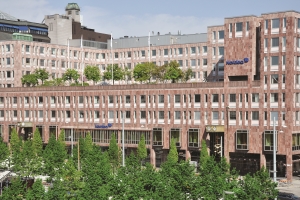Nordea blowout reopens Tier 2 after hiatus
Nordea attracted over Eu4.5bn of demand for a Eu750m (Skr7bn) 10 year non-call five Tier 2 issue on 2 November that was the first investment grade Tier 2 transaction since the beginning of September, paving the way for a series of its peers to follow.
“It certainly was a blowout and a very encouraging response,” said a syndicate official away from the leads. “You would think that would be enough to reawaken the market, which is now clearly wide open.”
Nordea Bank leads BAML, Goldman Sachs, Nordea and Société Générale launched the new issue with initial price thoughts of the 185bp over mid-swaps area, before moving to guidance of the 170bp-175bp area and setting the size at Eu750m with order books in excess of Eu3.5bn. The book then closed at over Eu4.5bn with more than 250 accounts, before the spread was fixed at 170bp. The deal was trading around 10bp tighter by the next morning.
An official at one of Nordea’s leads said the deal offered a limited new issue premium of around 18bp, based on the secondary level of other Swedish Tier 2 issues, with Handelsbanken Tier 2s callable in January 2019 seen at 130bp, Swedbank callable February 2019s at 135bp, and SEB callable May 2021s at 164bp.
The new issue was Nordea’s first euro denominated Tier 2 trade since 2012 and followed a Skr4bn (Eu434m) transaction of a similar structure in early September.
Fund managers took 62% of the deal, pension funds and insurance companies 26%, central banks and official institutions 4%, banks 2%, and others 6%. Investors from the UK and Ireland were allocated 32%, France 23%, the Benelux 16%, Germany, Austria and Switzerland 13%, the Nordics 12%, southern Europe 3%, and others 1%.
Barclays followed Nordea two days later, taking over Eu5bn of orders for a Eu1.25bn 10NC5 Tier 2 that was the first such issue out of its holding company. Syndicate officials said it was surprising that there had not been more activity that week, given supportive issuance conditions and the impressive books built by Nordea and Barclays.
“It’s hard to see why there’s not been more supply,” said one. “Most issuers are out of blackouts and the market feels good.”
The following Tuesday La Banque Postale and Nykredit Realkredit duly obliged with 12NC7 Tier 2 issues.
La Banque Postale’s Eu750m deal proved a hit, attracting more than Eu3.25bn of orders from around 270 accounts, with the level of demand allowing leads Barclays, BNP Paribas, Citi, Crédit Agricole CIB and UBS to tighten from IPTs of the mid-swaps plus 240bp area to guidance of 225bp-230bp and ultimate pricing of 225bp over. The leads put the new issue premium at slightly below 15bp, and the deal tightened a couple of basis points in the aftermarket.
Nykredit Realkredit attracted more than Eu2bn of demand for its Eu800m 12NC7 issue after having announced its third quarter results the previous week. According to Morten Bækmand Nielsen, head of investor relations at Nykredit, the issuer had been ready to approach the market for several months and was encouraged by the reopening of the sub debt market by Nordea.
“It was encouraging that you had such a name as Nordea going out and printing,” said Bækmand. “Up until then we had seen new issue premiums going out and out and out, but that kind of stabilised things.
“We were then able to dip our toes into Tier 2 ourselves, and into calmer waters, so that helped us a lot.”
Leads BNP Paribas, Goldman Sachs, JP Morgan, Natixis and Nykredit went out with IPTs of the 235bp over mid-swaps area, then set guidance at 220bp-225bp, and priced the issue at 220bp over.
“It was a very, very strong book,” said Bækmand, “and we were quite impressed by its depth and breadth. It was very broad-based, and with a lot of good names, as well as geographically diverse.”
However, Nykredit’s issue underperformed relative to La Banque Postale.
“We feel that we priced it right versus comparables and given market conditions,” Bækmand. “It was a bit disappointing that it traded wider, but we had the impression that this was due to technical factors.”

